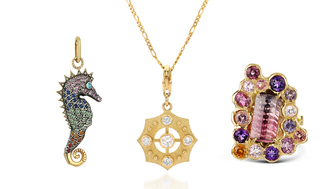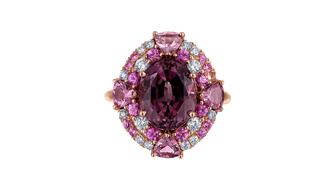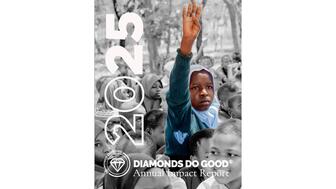As the shopping mall model evolves and online retail grows, Smith shares his predictions for the future of physical stores.
What Turns Consumers Off When Shopping Online
U.K. firm Klarna turned to college psychology professors to commission a study on what people love and hate about online shopping.
Stockholm--A Stockholm-headquartered company considered to be PayPal’s Swedish rival published a study this past summer on what consumers love and hate about online shopping.
“Emotional eCommerce” is a research report that combines a survey of 2,000 consumers of all ages in the U.K. conducted in June by Klarna U.K. with research from professors in the School of Psychology and Clinical Language Sciences at the University of Reading (England).
The report focuses mainly on what happens at the point of sale that makes a shopper abandon her or his digital cart, and what “nudges” retailers can provide to push the sale through.
According to what retailers interviewed for National Jeweler’s “50 Jewelers/50 States” series have said so far, a very small percentage of fine jewelry sales are made online. Consumers, they say, mostly use their site for browsing and come into the store when they are ready to buy.
But, for those transactions that do take place on the internet, the Klarna report provides some key points about the dislikes of online shoppers.
Let’s examine a few of them below.
1) A difficult check-out process
According to the report, transaction inconveniences--like having to enter a lot of personal data, register as buyer, or technical glitches--are often the No. 1 factor that makes shoppers abandon online purchases.
The study states: “Complex processes, such as registering for a site, are more likely to lead to abandonment for consumers, particularly if they are under ‘cognitive-load,’ e.g., later in the day, when they are tired, drinking or commuting.”
Where possible, retailers should simplify the checkout process. They should not ask for more information than they absolutely need. In instances where simplification is not possible, Klarna suggested adding an incentive for registering, such as free shipping or a discount.
The study also emphasized the importance of having one-click payments in place, meaning building a website that stores customers’ information so they don’t have to reenter their name, address, credit card number, etc. every time they shop.
2) Not knowing how much they are spending
Cost, not surprisingly, is a big factor in the decision-making process for millennials, many of whom are more cash-strapped than members of older generations.
The findings of the study “debunk the myth that items added to a basket show a clear intention to purchase.” Unlike in-store shopping, online shoppers, particularly millennials, are very likely to put items in their virtual cart just to review costs.
(Because of this, the study states, retailers should never expect their online conversation rate to reach 100 percent.)
Retailers can cut down on the number of shoppers who abandon their carts at checkout time by providing cost updates, i.e., making it so that the basket has the running total on it and stays visible throughout the shopping experience.
The study also emphasizes the importance of offering deferred payments, e.g., financing, to online shoppers, particularly those making high-dollar purchases.
3) An ugly website
Visual attractiveness and consistent presentation can help boost purchasing while the opposite can bring it down.
Specifically, the study recommends websites have high symmetry, low complexity, use a blue hue and be of medium brightness and medium to high saturation. The checkout page should be visually similar to the rest of the website because, if it’s not, it might cause the shopper to think twice about their purchase.
Websites also need to have a social presence, meaning it has to make shoppers feel like they are part of a community. The study recommends having online ratings, reviews and recommendations, particularly at checkout.
A PDF of the full report is available from Klarna.com.
The Latest

The trade show is slated for Jan. 31-Feb. 2 at The Lighthouse in New York City's Chelsea neighborhood.

January’s birthstone comes in a rainbow of colors, from the traditional red to orange, purple, and green.

How Jewelers of America’s 20 Under 40 are leading to ensure a brighter future for the jewelry industry.

The annual report highlights how it supported communities in areas where natural diamonds are mined, crafted, and sold.


Footage of a fight breaking out in the NYC Diamond District was viewed millions of times on Instagram and Facebook.

The supplier has a curated list of must-have tools for jewelers doing in-house custom work this year.

Roseco’s 704-page catalog showcases new lab-grown diamonds, findings, tools & more—available in print or interactive digital editions.

The Signet Jewelers-owned store, which turned 100 last year, calls its new concept stores “The Edit.”

Linda Coutu is rejoining the precious metals provider as its director of sales.

The governing board welcomed two new members, Claire Scragg and Susan Eisen.

Sparkle with festive diamond jewelry as we celebrate the beginning of 2026.

The master jeweler, Olympian, former senator, and Korean War veteran founded the brand Nighthorse Jewelry.

In its annual report, Pinterest noted an increase in searches for brooches, heirloom jewelry, and ‘80s luxury.

Executive Chairman Richard Baker will take over the role as rumors swirl that a bankruptcy filing is imminent for the troubled retailer.

Mohr had just retired in June after more than two decades as Couture’s retailer liaison.

Shekhar Shah of Real Gems Inc. will serve as president of the Indian Diamond & Colorstone Association in 2026.

This year’s good luck charm features the mythical horse Pegasus, and is our first Piece of the Week of the new year.

Articles about crime, engagement rings, and a necklace worn in the World Series generated the most interest among readers.

As part of the leadership transition, Sherry Smith will take on the role of vice president of coaching strategy and development.

It marks the third time the country has headed the Kimberley Process. Ghana will serve as vice chair.

The new Bulova x Stetson designs highlight two animals often associated with the American West—the bison and the Texas Longhorn.

Its residency at Yamron Jewelers will run through May 2026.

From influential executives to innovative designers, we pay tribute to the people we said goodbye to this year.

The retailer is expanding into areas with large Indian and South Asian populations.

The Italian brand has opened its first flagship amid the peaks of the Dolomites in Madonna di Campiglio, Italy.

The new curation at the Natural History Museum of Los Angeles County showcases rare gem and mineral specimens in their uncut, natural state.



























